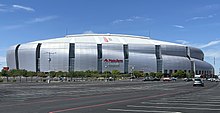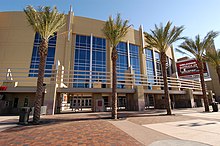

When preparing for a hike on a new trail, research is key to ensuring a safe and enjoyable experience. Before embarking on your journey, take the time to learn about the trail you will be hiking. This can include finding out the length of the trail, its level of difficulty, any potential hazards or obstacles along the way, and the best time of year to hike it.
By conducting thorough research beforehand, you can better prepare yourself for what to expect on the trail. This may involve packing appropriate gear such as sturdy hiking boots, plenty of water, sunscreen, insect repellent, and a first aid kit. Knowing the terrain and elevation changes ahead of time can also help you plan your pace and rest stops accordingly.
Additionally, researching the trail can provide valuable information on local wildlife, plant life, and historical points of interest that you may encounter along the way. This can enhance your overall hiking experience and deepen your appreciation for the natural beauty of the area.
In conclusion, taking the time to research the trail you will be hiking is essential for proper preparation and safety. By arming yourself with knowledge about the trail conditions and surroundings, you can ensure a successful and fulfilling outdoor adventure.
When preparing for a hike, one of the most important things to do is to check the weather forecast for the day of your trek. The weather can play a major role in the success and enjoyment of your hike, so it's crucial to be informed.
Checking the weather forecast will give you valuable information about what conditions to expect on the trail. If there is rain or thunderstorms predicted, you may need to reconsider your plans or pack appropriate gear such as a rain jacket and waterproof boots. If it's going to be extremely hot or cold, you'll want to dress accordingly and bring plenty of water or extra layers.
Not only does checking the weather forecast help you prepare physically for your hike, but it also ensures your safety. Hiking in extreme weather conditions can be dangerous and even life-threatening. By knowing what to expect ahead of time, you can make smart decisions about whether or not it's safe to go on your hike that day.
In conclusion, checking the weather forecast before embarking on a hike is an essential part of trail preparation. It allows you to plan accordingly, pack appropriately, and ensure your safety while out on the trail. So next time you're getting ready for a hike, don't forget to check the weather forecast!

Medical malpractice is a serious issue that can have devastating consequences for patients and their families.. When healthcare providers fail to meet the standard of care expected in their profession, it can lead to injuries, illnesses, or even death.
Posted by on 2024-11-21

When considering hiring a Glendale medical malpractice lawyer, one of the first questions that may come to mind is, "What compensation can I expect?" It's a valid concern, especially when dealing with the aftermath of a medical error or negligence. In general, the compensation you can expect from hiring a medical malpractice lawyer in Glendale will depend on the specifics of your case.. Every case is unique and will be handled differently based on factors such as the severity of the injury or harm caused, the extent of damages incurred, and the level of negligence demonstrated by the healthcare provider. A skilled medical malpractice lawyer will work tirelessly to secure the maximum amount of compensation possible for their client.
Posted by on 2024-11-21
When preparing for a trail adventure, it is essential to pack necessary items to ensure a safe and enjoyable experience. Water is crucial for staying hydrated throughout the hike, especially in hot weather or strenuous conditions. It is recommended to carry at least one liter of water per hour of hiking.
Snacks are also important to keep your energy levels up during the trek. Choose portable and high-energy foods like nuts, dried fruits, granola bars, and jerky. These will provide quick fuel for your body to keep you going.
A first aid kit is a must-have in case of any injuries or emergencies along the trail. Include bandages, antiseptic wipes, pain relievers, blister treatment, and any personal medications you may need. It's better to be prepared than sorry.
Lastly, wearing appropriate clothing can make all the difference in your comfort and safety on the trail. Dress in layers that can be easily added or removed as needed. Wear moisture-wicking fabrics to stay dry and comfortable, sturdy footwear with good traction, a hat for sun protection, and sunglasses.
By packing these essential items for your trail adventure, you can enjoy the great outdoors with peace of mind knowing that you are prepared for whatever may come your way. Stay safe and happy trails!

When preparing for a hike, it's always important to inform someone of your plans. Letting a friend or family member know where you'll be hiking, the trail you plan on taking, and your expected return time can provide peace of mind for both you and your loved ones.
Not only does sharing this information ensure that someone knows where to look for you in case of an emergency, but it also allows them to alert authorities if you don't return at the expected time. This simple step can potentially save valuable time in a search and rescue situation.
In addition to informing someone of your hiking plans, it's also a good idea to provide them with a map of the trail you'll be taking and any relevant contact information for park rangers or emergency services. Being prepared and proactive in communicating your plans can make all the difference in ensuring a safe and enjoyable hiking experience.
So next time you head out on a hike, take a moment to share your plans with someone you trust. It's a small gesture that can have big benefits in keeping you safe on the trails.
Before embarking on a hike, it is crucial to make sure your phone is fully charged. This simple step can make a huge difference in ensuring your safety and peace of mind while out on the trail.
Having a fully charged phone means you will have access to important resources in case of an emergency. Whether you need to call for help, use GPS to navigate back to the trailhead, or even just snap some photos of the beautiful scenery, a charged phone is essential.
It is also important to remember that hiking can be unpredictable, and having a dead phone could leave you stranded without any way to communicate with the outside world. By taking the time to charge your phone before setting out on your hike, you are taking a proactive step towards being prepared for whatever may come your way.
So before you hit the trail, take a few moments to plug in your phone and ensure it is fully charged. It may seem like a small detail, but it could make all the difference in ensuring a safe and enjoyable hiking experience.
Glendale | |
|---|---|
 Downtown
Glendale | |
 Location in Maricopa County, Arizona | |
| Coordinates: 33°32′19″N 112°11′11″W / 33.53861°N 112.18639°W | |
| Country | United States |
| State | Arizona |
| County | Maricopa |
| Founded by | William John Murphy |
| Government | |
| • Mayor | Jerry Weiers (Non-Partisan) |
| • Vice mayor | Jamie Aldama |
| Area | |
• Total | 65.09 sq mi (168.59 km2) |
| • Land | 64.68 sq mi (167.53 km2) |
| • Water | 0.41 sq mi (1.06 km2) |
| Elevation | 1,152 ft (351 m) |
| Population | |
• Total | 248,325 |
| • Rank | US: 89th |
| • Density | 3,839.17/sq mi (1,482.30/km2) |
| Demonym | Glendalian |
| Time zone | UTC−7 (MST (no DST)) |
| ZIP code | 85301-85318 |
| Area codes | 602, 480, 623 |
| FIPS code | 04-27820 |
| GNIS feature ID | 5060[2] |
| Website | www |
Glendale (/ˈɡlɛndeɪl/) is a city in Maricopa County, Arizona, United States. Located about nine miles northwest of the state capital Phoenix, Glendale is known for State Farm Stadium, which is the home of the Arizona Cardinals football team. The city also contains the Arrowhead Towne Center shopping mall. As of the 2020 census, Glendale had a population of 248,325.[3]
In the late 1800s the area that is now Glendale was all desert. William John Murphy, a native of New Hartford, New York, who resided in the town of Flagstaff in what was then the territory of Arizona, was in charge of building the 40-mile-long (64 km) Arizona Canal from Granite Reef to New River for the Arizona Canal Company. In 1885, he completed the canal, which would bring water to the desert land.[4] Murphy was deep in debt, since he had agreed to be paid in Arizona Canal Company stock and bonds and land instead of cash.[5]

In 1887, Murphy formed the Arizona Improvement Company. His objective was to sell the land and water rights south of the canal. Murphy raised capital from out of state sources in order to meet payroll and construction expenses.[5] Murphy decided to refer to this land as "Glendale". In order to develop and interest potential investors and settlers in this new town, Murphy decided to provide a better way of access from Phoenix to Glendale and ending in the town of Peoria by building an 18-mile-long (29 km) diagonal road which he named Grand Avenue.
In 1891, Burgess Hadsell worked with Murphy to bring 70 Brethren and River Brethren families to Glendale to form a temperance colony. Soon settlers, attracted by the town's ban on alcoholic beverages, continued to arrive. In 1895, Murphy platted the original town site and amended the plat to include a town park and some business lots. It was bounded by Lamar Road on the south, 55th Avenue on the east, Myrtle Avenue on the north, and 59th Avenue on the west.[6] The construction of a railroad from Prescott to Phoenix was made possible with an exchange of the right-of-way made by Murphy along Grand Avenue.[4] The railroad allowed Glendale settlers to transport goods to the north and easily receive building materials.
The construction and commercial applications of the Beet Sugar Factory in 1906 also contributed to the growth of Glendale. Though the operations of the factory only lasted until 1913, it played an important role in the increase of immigrant and migrant settlers in the city.[7] Several other businesses were founded around this time such as Glendale Ice Company, Pacific Creamery Company, Glendale Milling Company, and Southwest Flour and Feed.[8]
World War I ushered in a renewal for Glendale, with cotton prices rising throughout the period. Cotton continues to be a source of economic prosperity in Glendale with many farms still along the Loop 101, despite many farmers switching to more profitable crops.[9] A high demand for food, also kept farmers busy. Numerous farms and orchards were established and thrived through the early 1900s.[10]
World War II brought the birth of Thunderbird Field to train civilian pilots for the Army. In late 1940, a few Hollywood actors and businessmen, headed by Leland Hayward, approached the Army to establish a primary flight training school. This group chose the site of Thunderbird Field primarily because of its abundance of space, excellent weather, and good visibility.[11] While this field was being built in 1941, the Army was busy working on a larger base for $4.5 million, Luke Field (now Luke Air Force Base). This base was named for the first pilot to receive a Medal of Honor, Lt. Frank Luke Jr. Thunderbird Field would later become the Thunderbird American Graduate School for International Management.
The military and college presence, as well as the increase in population (nearly doubling between 1950 and 1960),[12] sparked a need for utilities, parks, schools and streets. Over the next 40 years, the city added a landfill, water treatment plant, sewage plants, libraries, parks, public safety facilities, an airport, a city hall and a civic center.
Arrowhead Towne Center opened in 1993, and the surrounding neighborhood, Arrowhead Ranch, made the area a hotspot for housing and shopping. The completion of Loop 101 throughout Glendale opened the city to the rest of the Valley.[8]
In recent decades, the city has begun major investment into tourism. The establishment of the Westgate Entertainment District, housing Desert Diamond Arena, and State Farm Stadium in the early 2000s made Glendale a destination for locals and visitors. Construction of the VAI Resort and Mattel Adventure Park, scheduled to open in 2025, will continue to grow Glendale’s tourism economy creating hundreds of new jobs and proving more than a thousand new hotel rooms for the city.[13][14]
In 2024, the city called on the Department of Defense to lobby for Arizona Governor Katie Hobbs to veto bipartisan legislation to increase housing supply in Arizona. Ryan Lee, the city’s intergovernmental-programs director, confirmed to The Atlantic that he was behind the move. State Representative Analise Ortiz, whose district includes parts of Glendale, criticized the city for going behind legislators' back to lobby against the legislation, "This is not the way we typically go about creating policy."[15]
According to the United States Census Bureau, the city has a total area of 65.1 square miles (169 km2), of which 0.4 square miles (1.0 km2), or 0.63%, is water.[1] The New River and Agua Fria River flow southward through the western extremities of the city.
Glendale has a hot desert climate (Köppen: BWh) typical of Southern Arizona, with very hot and dry summers and mild winters.[16]
| Climate data for Phoenix Int'l, Arizona (1991–2020 normals,[a] extremes 1895–present)[b] | |||||||||||||
|---|---|---|---|---|---|---|---|---|---|---|---|---|---|
| Month | Jan | Feb | Mar | Apr | May | Jun | Jul | Aug | Sep | Oct | Nov | Dec | Year |
| Record high °F (°C) | 88 (31) |
92 (33) |
100 (38) |
105 (41) |
114 (46) |
122 (50) |
121 (49) |
118 (48) |
118 (48) |
113 (45) |
99 (37) |
87 (31) |
122 (50) |
| Mean maximum °F (°C) | 78.2 (25.7) |
82.1 (27.8) |
90.4 (32.4) |
99.0 (37.2) |
105.7 (40.9) |
112.7 (44.8) |
114.6 (45.9) |
113.2 (45.1) |
108.9 (42.7) |
100.7 (38.2) |
88.9 (31.6) |
77.7 (25.4) |
115.7 (46.5) |
| Mean daily maximum °F (°C) | 67.6 (19.8) |
70.8 (21.6) |
78.1 (25.6) |
85.5 (29.7) |
94.5 (34.7) |
104.2 (40.1) |
106.5 (41.4) |
105.1 (40.6) |
100.4 (38.0) |
89.2 (31.8) |
76.5 (24.7) |
66.2 (19.0) |
87.1 (30.6) |
| Daily mean °F (°C) | 56.8 (13.8) |
59.9 (15.5) |
66.3 (19.1) |
73.2 (22.9) |
82.0 (27.8) |
91.4 (33.0) |
95.5 (35.3) |
94.4 (34.7) |
89.2 (31.8) |
77.4 (25.2) |
65.1 (18.4) |
55.8 (13.2) |
75.6 (24.2) |
| Mean daily minimum °F (°C) | 46.0 (7.8) |
49.0 (9.4) |
54.5 (12.5) |
60.8 (16.0) |
69.5 (20.8) |
78.6 (25.9) |
84.5 (29.2) |
83.6 (28.7) |
78.1 (25.6) |
65.6 (18.7) |
53.7 (12.1) |
45.3 (7.4) |
64.1 (17.8) |
| Mean minimum °F (°C) | 36.0 (2.2) |
40.0 (4.4) |
44.4 (6.9) |
50.1 (10.1) |
58.4 (14.7) |
69.4 (20.8) |
74.4 (23.6) |
74.2 (23.4) |
68.3 (20.2) |
53.8 (12.1) |
42.0 (5.6) |
35.4 (1.9) |
33.8 (1.0) |
| Record low °F (°C) | 16 (−9) |
24 (−4) |
25 (−4) |
35 (2) |
39 (4) |
49 (9) |
63 (17) |
58 (14) |
47 (8) |
34 (1) |
27 (−3) |
22 (−6) |
16 (−9) |
| Average precipitation inches (mm) | 0.87 (22) |
0.87 (22) |
0.83 (21) |
0.22 (5.6) |
0.13 (3.3) |
0.02 (0.51) |
0.91 (23) |
0.93 (24) |
0.57 (14) |
0.56 (14) |
0.57 (14) |
0.74 (19) |
7.22 (183) |
| Average precipitation days (≥ 0.01 in) | 3.8 | 4.1 | 3.1 | 1.5 | 1.0 | 0.5 | 3.9 | 4.6 | 2.5 | 2.2 | 2.2 | 4.0 | 33.4 |
| Average relative humidity (%) | 50.9 | 44.4 | 39.3 | 27.8 | 21.9 | 19.4 | 31.6 | 36.2 | 35.6 | 36.9 | 43.8 | 51.8 | 36.6 |
| Average dew point °F (°C) | 32.4 (0.2) |
32.2 (0.1) |
32.9 (0.5) |
31.6 (−0.2) |
34.3 (1.3) |
39.0 (3.9) |
56.1 (13.4) |
58.3 (14.6) |
52.3 (11.3) |
43.0 (6.1) |
35.8 (2.1) |
33.1 (0.6) |
40.1 (4.5) |
| Mean monthly sunshine hours | 256.0 | 257.2 | 318.4 | 353.6 | 401.0 | 407.8 | 378.5 | 360.8 | 328.6 | 308.9 | 256.0 | 244.8 | 3,871.6 |
| Percent possible sunshine | 81 | 84 | 86 | 90 | 93 | 95 | 86 | 87 | 89 | 88 | 82 | 79 | 87 |
| Average ultraviolet index | 3.1 | 4.4 | 6.6 | 8.5 | 9.7 | 10.9 | 11.0 | 10.1 | 8.3 | 5.6 | 3.7 | 2.7 | 7.0 |
| Source 1: NOAA (dew points, relative humidity, and sun 1961–1990)[17][18][19], Weather.com[20] | |||||||||||||
| Source 2: UV Index Today (1995 to 2022)[21] | |||||||||||||
| Census | Pop. | Note | %± |
|---|---|---|---|
| 1910 | 1,000 | — | |
| 1920 | 2,737 | 173.7% | |
| 1930 | 3,665 | 33.9% | |
| 1940 | 4,855 | 32.5% | |
| 1950 | 8,179 | 68.5% | |
| 1960 | 15,893 | 94.3% | |
| 1970 | 36,228 | 127.9% | |
| 1980 | 97,172 | 168.2% | |
| 1990 | 147,864 | 52.2% | |
| 2000 | 218,812 | 48.0% | |
| 2010 | 226,721 | 3.6% | |
| 2020 | 248,325 | 9.5% | |
| U.S. Decennial Census[22] | |||
| Race / Ethnicity (NH = Non-Hispanic) | Pop 2000[23] | Pop 2010[24] | Pop 2020[25] | % 2000 | % 2010 | % 2020 |
|---|---|---|---|---|---|---|
| White alone (NH) | 141,462 | 116,866 | 107,695 | 64.65% | 51.55% | 43.37% |
| Black or African American alone (NH) | 9,818 | 12,766 | 17,872 | 4.49% | 5.63% | 7.20% |
| Native American or Alaska Native alone (NH) | 2,460 | 2,707 | 3,030 | 1.12% | 1.19% | 1.22% |
| Asian alone (NH) | 5,860 | 8,618 | 11,272 | 2.68% | 3.80% | 4.54% |
| Pacific Islander alone (NH) | 230 | 355 | 492 | 0.11% | 0.16% | 0.20% |
| Other race alone (NH) | 289 | 329 | 1,171 | 0.13% | 0.15% | 0.47% |
| Mixed race or Multiracial (NH) | 4,350 | 4,579 | 9,176 | 1.99% | 2.02% | 3.70% |
| Hispanic or Latino (any race) | 54,343 | 80,501 | 97,617 | 24.84% | 35.51% | 39.31% |
| Total | 218,812 | 226,721 | 248,325 | 100.00% | 100.00% | 100.00% |
As of the census of 2010, there were 226,710 people, 79,114 households, and 54,721 families residing in the city. The population density was 3,929.5 inhabitants per square mile (1,517.2/km2). There were 79,667 housing units at an average density of 1,430.7 per square mile (552.4/km2). The racial makeup of the city was 75.54% White, 6% Black or African American, 1.7% Native American, 3.9% Asian, 0.2% Pacific Islander, 16.95% from other races, and 4.0% from two or more races. 35.5% of the population was Hispanic or Latino of any race.
There were 79,114 households, out of which 39.9% had children under the age of 18 living with them, 53.5% were married couples living together, 12.8% had a female householder with no husband present, and 28.2% were non-families. 21.3% of all households were made up of individuals, and 5.8% had someone living alone who was 65 years of age or older. The average household size was 2.85 and the average family size was 3.33.
In the city, 30.1% of the population was under the age of 18, 10.8% was from 18 to 24, 31.9% from 25 to 44, 19.9% from 45 to 64, and 7.4% was 65 years of age or older. The median age was 31 years. For every 100 females, there were 99.6 males. For every 100 females age 18 and over, there were 97.1 males.
The median income for a household in the city was $45,015, and the median income for a family was $51,162. Males had a median income of $35,901 versus $27,736 for females. The per capita income for the city was $19,124. About 8.8% of families and 11.9% of the population were below the poverty line, including 15.3% of those under age 18 and 9.5% of those age 65 or over.
| # | Employer | # of Employees |
|---|---|---|
| 1 | Luke Air Force Base | 5,100 |
| 2 | Banner Health | 3,000 |
| 3 | Arrowhead Towne Center | 2,650 |
| 4 | Walmart | 2,175 |
| 5 | Glendale Union High School District | 1,974 |
| 6 | Glendale Community College | 1,948 |
| 7 | The City of Glendale | 1,693 |
| 8 | Deer Valley Unified School District | 1,594 |
| 9 | Glendale Elementary School District | 1,400 |
| 10 | Tanger Outlets | 1,200 |
Source: AZCentral.com[26]


Glendale is noted for its retail sales of antiques.[30]
The Arrowhead Towne Center mall is located here.
Glendale was temporarily renamed as Swift City on March 17 and 18, 2023,[31] as per the mayor and the city council's proclamation,[32] to celebrate the opening concerts of the Eras Tour, the sixth concert tour by American singer-songwriter Taylor Swift, at State Farm Stadium.[33] The Westgate Entertainment District, a mixed-use complex in the city, additionally put up welcoming messages, with the local restaurants offering Swift-themed menu items.[34][35] State Farm also hosted the Super Bowl LVII halftime show, headlined by Barbadian singer Rihanna, shortly before the tour.[36]


Glendale is the site of two major sports venues: State Farm Stadium and Desert Diamond Arena. Both venues are part of the Glendale Sports and Entertainment District development plan, meant to spur growth in the sparsely inhabited Yucca district. Both venues are owned by the City of Glendale.
State Farm Stadium has been the home field of the Arizona Cardinals in the National Football League since 2006, and the annual Fiesta Bowl college football game since 2007. Both the Cardinals and bowl game moved from Sun Devil Stadium on the Arizona State University campus in Tempe. Since opening, the facility has hosted three Super Bowls, three college football national championship games, the NCAA Men's Basketball Final Four, WrestleMania XXVI and International Champions Cup soccer to Glendale. Designed by architect Peter Eisenman, the stadium was featured on The History Channel TV series, Modern Marvels because of its roll-out natural grass field.
Desert Diamond Arena (formerly Glendale Arena, then Jobing.com Arena and Gila River Arena) and Westgate City Center is adjacent to State Farm Stadium, and was the home of the Arizona Coyotes of the National Hockey League (NHL). It was also the home of the now defunct Arizona Sting of the National Lacrosse League (NLL). The inaugural Street League Skateboarding event was held in the summer of 2010 in Glendale at the Gila River Arena. This street skateboarding competition returns to Glendale annually. Currently, the arena hosts the Arizona Rattlers of the Indoor Football League.
In 2009, the Los Angeles Dodgers and the Chicago White Sox of Major League Baseball began to share the new Camelback Ranch-Glendale spring training complex and stadium in Glendale owned and operated by the City of Glendale.
There are a number of higher education campuses in Glendale. Glendale Community College and Glendale Community College North, just across the border in northwestern Phoenix, are members of the Maricopa County Community College District. Arizona State University’s Thunderbird School of Global Management was founded in Glendale at Thunderbird Field after World War II and recently relocated its campus to the downtown location of ASU after joining the university as an independent unit dedicated to international business education. West campus is just across the border from Glendale in west Phoenix. Midwestern University is a graduate college of medicine located in Glendale.
Many school districts serve the city of Glendale.
The following school districts serve the city:
Grace Lutheran School is a Pre-K-8 Christian school of the Wisconsin Evangelical Lutheran Synod (WELS) in Glendale.[38]
New Gains Academy is a grade 5-12 Microschool in Glendale. with academics, business entrepreneurship, piano, voice, dance and art programs.
Our Lady of Perpetual Help Catholic School is a Pre-K-8 Catholic school of the Roman Catholic Diocese of Phoenix in Glendale.[39]
Arrowhead Christian Academy is a K-12 Christian school associated with Northwest Valley Baptist Church in Glendale.[40]
The city of Glendale has a roughly average percentage of households without a car. In 2015, 8.4 percent of Glendale households lacked a car, and increased slightly to 9 percent in 2016. The national average was 8.7 percent in 2016. Glendale averaged 1.72 cars per household in 2016, compared to a national average of 1.8.[41]
Glendale Municipal Airport serves the city but it does not offer commercial air services. The closest commercial airport is Phoenix Sky Harbor International Airport, located about 30 minutes away by car.
Glendale has two sister cities: